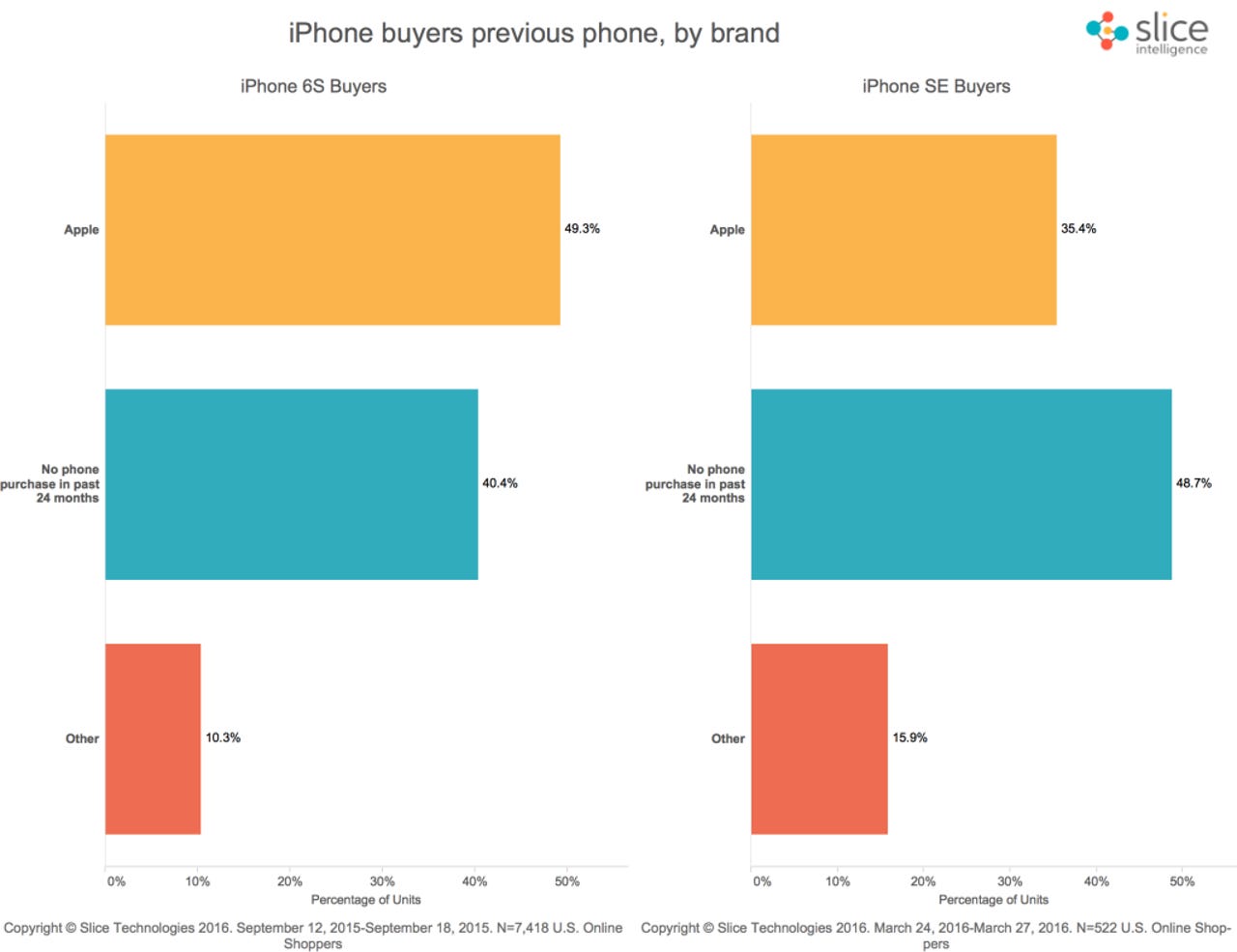Apple iPhone SE: Can it really be luring in more Android switchers?


The figures suggest the iPhone SE is drawing more Android switchers.
The new four-inch-screen iPhone SE might not have thrilled smartphone fans, but data on Apple's online sales suggests it is reaching a new group of consumers.
Online sales of the iPhone SE on the first weekend of availability were muted compared with those following the iPhone 6's launch, and to a lesser extent with those of the iPhone 6s, according to market research firm Slice Intelligence.
The firm produces figures for Apple's online sales based on electronic receipts in the inboxes of its panel of four million online shoppers in the US. According to its opening weekend data on the new iPhone, sales amounted to about three percent of the iPhone 6's figures in the equivalent period.
But as Slice Intelligence points out, iPhone SE buyers look different to the typical Apple fanboy -- and are more likely to be switching from Android devices than iPhone 6 buyers were.
About half of iPhone 6s buyers had bought an earlier iPhone online in the past two years, while 10 percent bought an Android handset in the period. The equivalent figures for iPhone SE buyers are 35 percent and 16 percent respectively, which means more Android switchers for that device.
Also, 48 percent of iPhone SE buyers hadn't bought a phone in the past two years, compared with 40 percent for iPhone 6s buyers. In other words, the new four-inch phone from Apple appears to be attracting more consumers who don't conform to the usual two-year upgrade cycle.
A larger proportion of iPhone SE launch buyers are also older and male, compared with the average for all iPhone buyers.
"More than one fifth [21 percent] of SE buyers are in the 45-to-54 age demographic, versus 18 percent for all iPhone buyers; and 77 percent of SE buyers are men, versus 69 percent," Slice Intelligence said.
Additionally, 15 percent of iPhone SE buyers were aged 65 and over compared with 12.8 percent in that age group for all iPhone buyers.
Slice Intelligence argues that this statistic shows the iPhone SE is attracting new consumers to the iPhone. It also highlights that 38 percent of iPhone SE buyers have a college degree, compared with 46 percent who pre-ordered an iPhone 6 or 6s.
The iPhone SE's lower starting price may also be appealing to Chinese consumers. According to a report from CNBC on Tuesday, iPhone SE pre-orders at Chinese retailers have reached 3.4 million.
A JP Morgan analyst last week estimated iPhone SE sales would reach 17 million in 2016, giving Apple an additional $6.9bn in revenue.